Even before reaching late-stage knee OA, a patient's articular surface may have already severey worn off or deformed, leading to pain, restricted mobility or other function, and diminished quality of living. Arthroplasty can markedly relieve symptoms, correct deformity, and effectively improve knee function, so it is the fastest and a relatively effective method to treat knee problems. It has helped countless mobility-restricted patients. In Taiwan, patients of severe knee OA receive arthroplasty more than 20,000 person times each year. There are two types of arthroplasty:Microplasty of the knee and total knee arthroplasty.
Microplasty of the knee
This arthroplasty, diagram 1, is used when only one articular surface is damaged. The surgery is analogous to filling a dental cavity. While total knee arthroplasty removes all tissues in the knee, unicompartmental arthroplasty needs to fix the damaged articular surface and thus keep normal tissues in tact. Ergonomically designed mobile disk, which is covered by the femur, allowing bigger range of motion like a ball. This design causes less abrasion resulting from friction on a single point than does a design of fixed knee joint. Patients recover faster. Physiological functions, which almost mimic a natural knee, can return to almost normal levels.
However, constrained by the small incision, the surgeon needs to perform such acts as cutting and grinding bones in a small space. Therefore the surgeon needs to possess a higher level of surgical dexterity, expertise, and experience in order to perform Uni K.
| Diagram 1 :Microplasty of the knee | ||
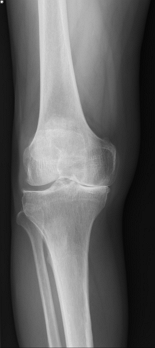 |
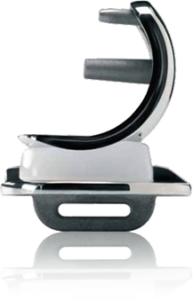 |
 |
| Pre-surgery | Prosthesis | Post-surgery |
Precision Arthroplasty
Precision Arthroplasty, also known as TKA, is the most common form of knee replacement surgery. It is suitable when the patient suffers severe deformity or more than two articular surfaces are damaged.
The procedure excises damaged articular surface, smoothes out the area, and installs the prosthesis to enable the knee to move smoothly and to correct deformity. TKA is analogous to dental implant.
TKA unavoidably excises and damages tissues. For example, the anterior cruciate ligament, posterior cruciate ligament, and meniscus in the knee are all excised. Consequently, a patient with an artificial knee cannot move as naturally and freely as before.
| Diagram 2 Precision arthroplasty | ||
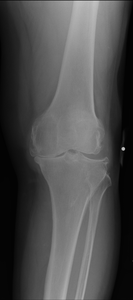 |
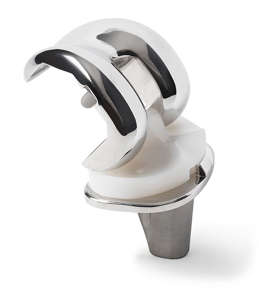 |
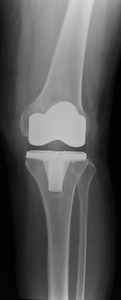 |
| Pre-surgery | Prosthesis | Post-surgery |
Arthroplasty offers high success rates and apparent and immidiate improvement, but serious complications are occasionally possible. Therefore, the patient must be very clear before deciding to undergo this treatment. They should be fully aware that arthroplasty is the last resort of all treatments for knee OA and that once the procedure is performed, there is no going back whatsoever. All patients should take utmost care before proceeding.


